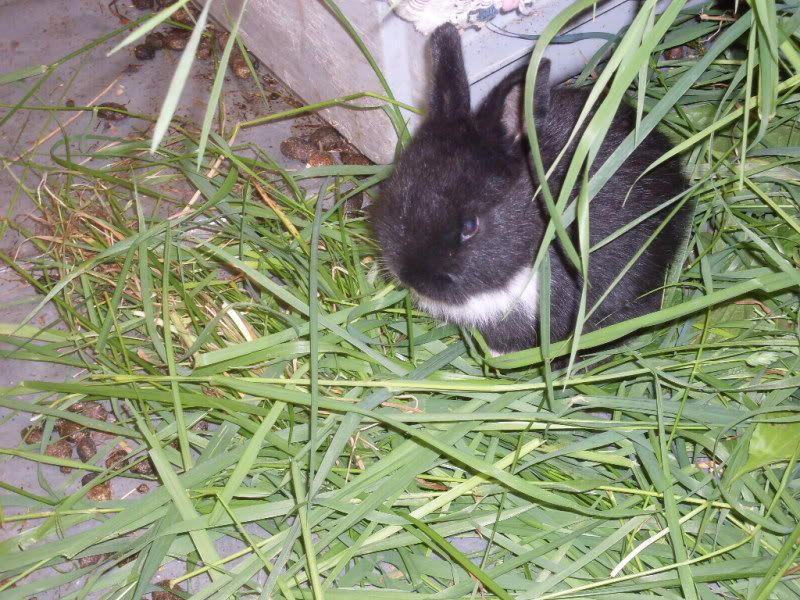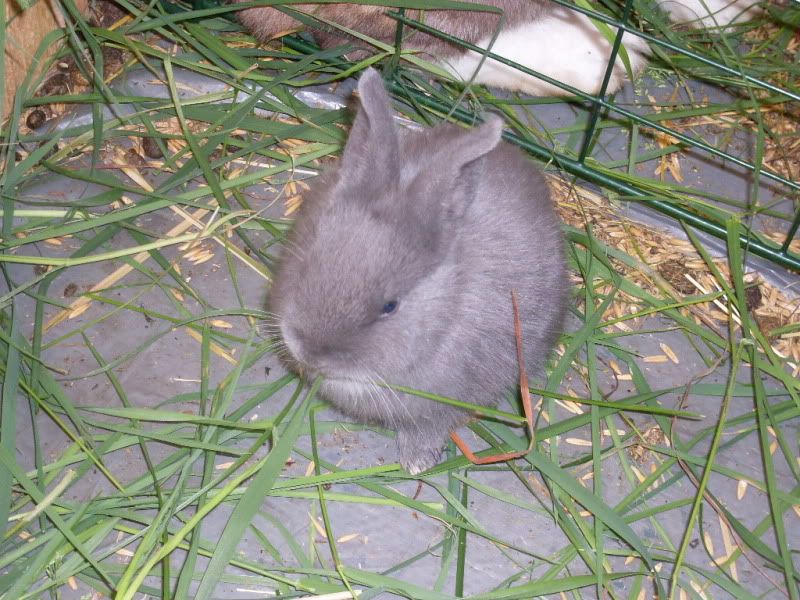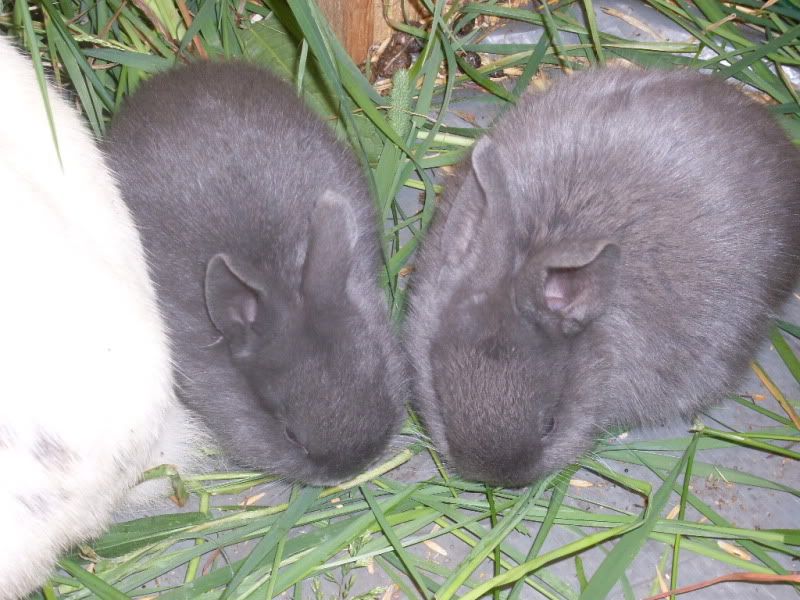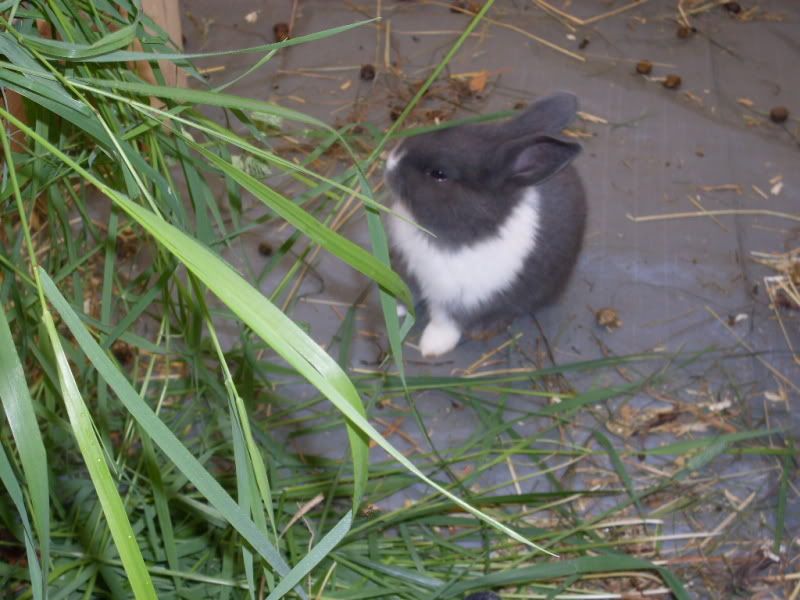nibblerandco
Young Bun
Miren had just become pregnant when I bought her and they didn't know and I didn't know. They were a little embarrassed since they are hellbent on purebred bunnies (they have 2 breeds) and the one I got is a Gotland which is seen as a really rare breed that you should never cross with something else.  And this was their fault.
And this was their fault.
So these are Gotland/Dutch.
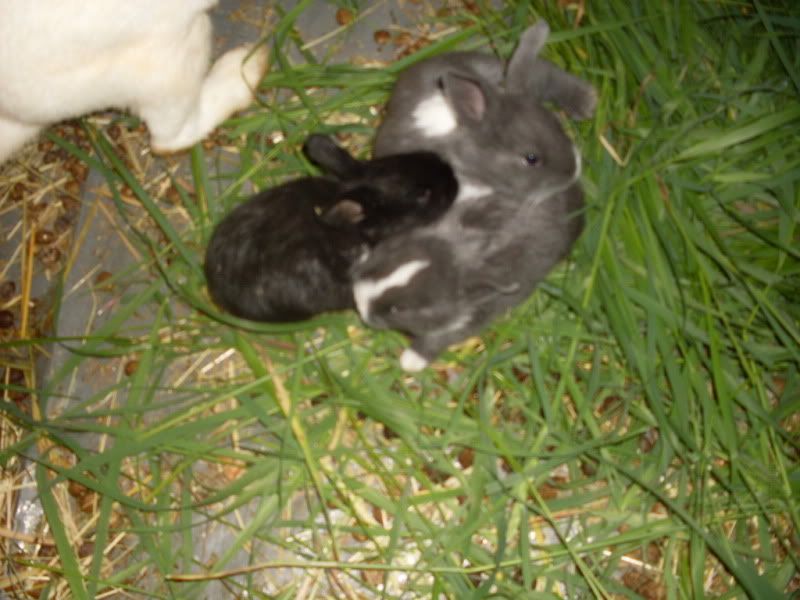
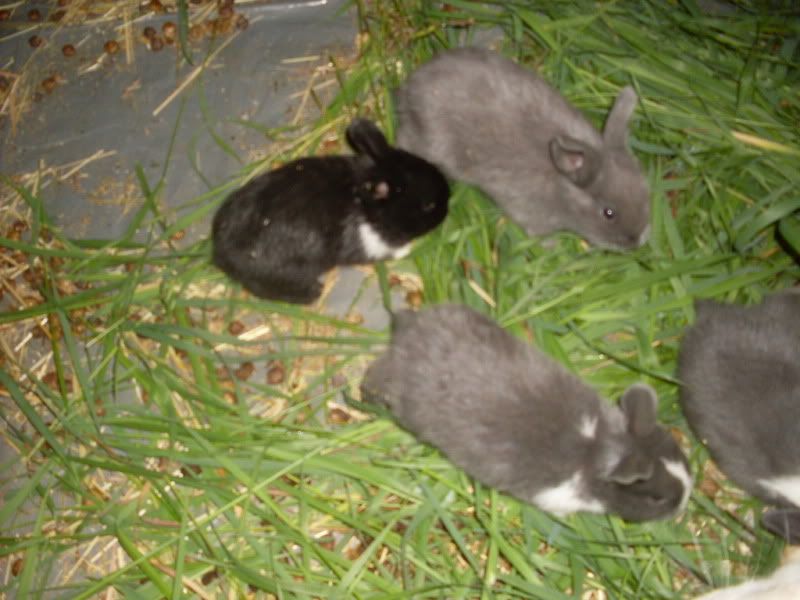
And these are the adults:
http://www.youtube.com/watch?v=n2w_R_ZINJU
I also have to toss in a question. If I am to mate the female again (a planned thing this time!) how long should she wait between to be sure I don't wear her out? I feel I want new kits before the summer is over and then let her rest for a long while but maybe that is too soon?
So these are Gotland/Dutch.


And these are the adults:
http://www.youtube.com/watch?v=n2w_R_ZINJU
I also have to toss in a question. If I am to mate the female again (a planned thing this time!) how long should she wait between to be sure I don't wear her out? I feel I want new kits before the summer is over and then let her rest for a long while but maybe that is too soon?


